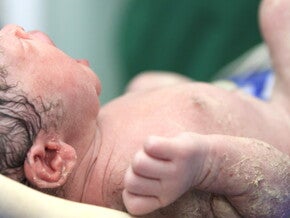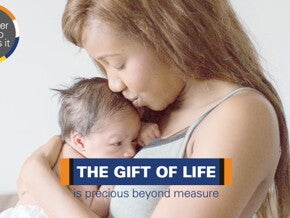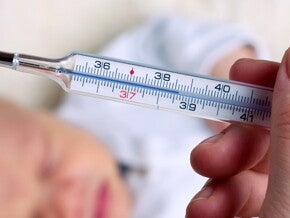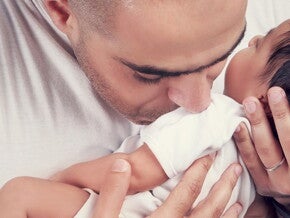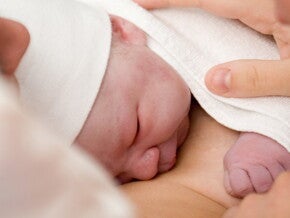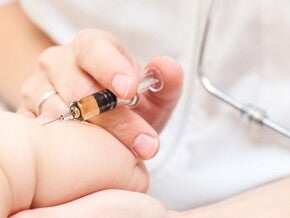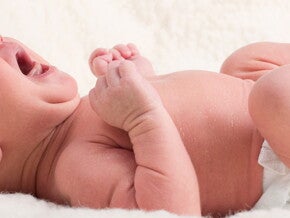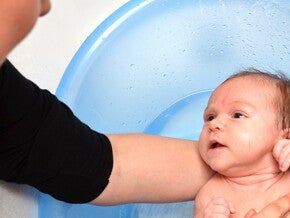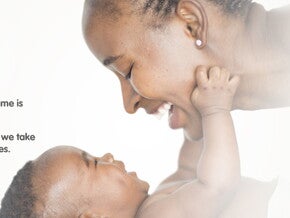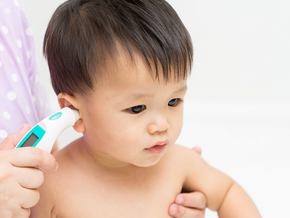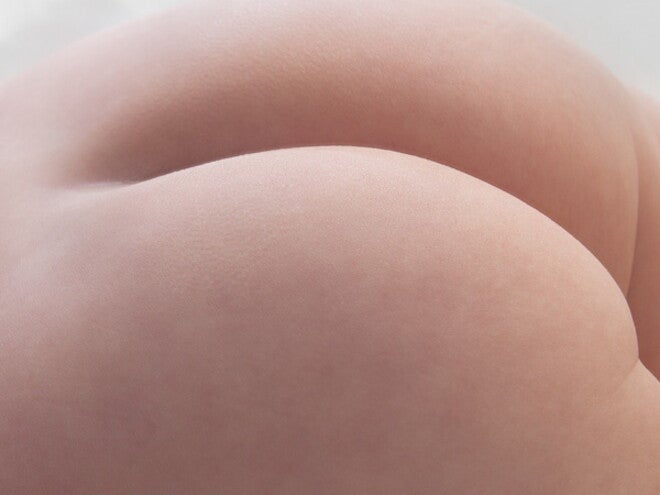
- Treat with plain water and cotton wool.
- See your doctor if the rash occurs with other symptoms, or appears as an inflamed area with a yellowish-white head or as a blister.
- Infantile acne (Infantile acne erupts on the nose or cheeks of a newborn. This is usually caused by hormonal changes that occurred as the foetus was developing, and clears in a matter of weeks, without treatment.), is not to be confused with milia (Milia: tiny cysts on the skin of the infant, presenting).
Heat rash or prickly heat
Heat rash is caused by overdressing your baby and occurs in areas with numerous sweat glands – face, neck, shoulders and chest.
- Dress your baby according to the weather not the season.
- Don’t put wool next to his skin – cotton is better.
- Feel his temperature by placing your hand down the back of his neck and back. If your baby feels too hot, cool him by removing some clothing.
- Bathing him can also help.
Nappy rash
Nappy rash (Nappy rash/thrush Your baby most likely has thrush if the rash in the nappy area does not respond to barrier cream, and involves the anal area.) is caused by moisture and heat, and is common during a baby’s first year.
- Change your baby’s nappy frequently.
- Avoid using unwashed clothes as the germs will multiply.
- Air his bottom frequently and expose it to the sun for short periods.
- Use a barrier cream before replacing his nappy.
- Avoid harsh washing powders for towelling nappies.
Thrush
Thrush is a yeast infection caused by the fungus candida albicans and is more common in babies who use teats and dummies. It thrives on moisture and humidity, and can come from the birth canal of a mother with vaginal thrush, or from her nipples.
- The infection passes through the baby’s system from the mouth (oral thrush), and can occur in the anal area.
- It is most visible inside the cheeks and on the palate and tongue. It looks like milk spots, but cannot be wiped off.
- It is uncomfortable and your baby may struggle to feed.
Treatment
- Apply an anti-fungal medication as recommended by your healthcare professional.
- Air the baby’s bottom and your nipples frequently, exposing them to small doses of sunlight.
- Replace all teats and dummies.
Sticky eyes
A blocked tear duct can cause sticky eyes when the fluid becomes stagnant and infected, causing a yellow discharge. This dries out and causes the baby’s eyelids to stick together when he is asleep.
- Wipe his eyes with cooled, boiled water from the inner eye outward.
- Use breast milk to clean each eye with separate cotton wool swabs.
Cradle cap
This is a common complaint with babies during the first few months. It appears as oily yellow scales or crusts on the baby’s head – usually on the ‘soft spot’, the baby’s eyebrows, or just above the ears.
Cradle cap is a harmless, although unsightly, condition which usually settles by the time your baby is four months old.
Treatment
- Wash the baby’s hair daily with a gentle, clear shampoo.
- Your doctor can prescribe a medicated shampoo if the crusts occur.
- Various home remedies are available to soften the crusts on the scalp, such as aqueous cream, olive oil or Vaseline.
- Leave the treatment on overnight.
- Rub the area gently with a dry, clean towel to loosen the crusts.
- A fine comb can be used to remove the crusts, then wash the hair in the normal way. You may need to repeat this procedure two or three times.
